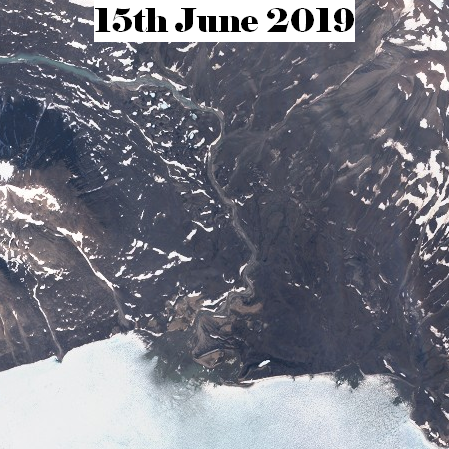Summer snow cover 2018 leading to reproductive failure in Zackenberg
Last month, a new publication lead by Niels M. Schmidt went around the world, describing the intense biological responses to one year of extreme snow event in Zackenberg.
While climate change has led to gradually increasing temperatures on a global scale, local effects can have different magnitudes and frequencies. Furthermore, precipitation patterns increased in variability across the Arctic, making them and their effects on ecosystems increasingly harder to predict. Monitoring both physical and biological parameters supplies the ability to put rare phenomena into context and build a better understanding of ecosystem responses to the shifting climatic forcings.
The new publication lead by Niels M. Schmidt, describes the intense biological responses to one year of extreme snow event in Zackenberg (Schmidt et al., 2019).
Large amounts of snow in Zackenberg over the winter season resulted in snow remaining throughout the summer season of 2018, making it one extreme year (see Figure 1 below).


Figure 1 Comparison of mid-June snow extent 2018 (left) to 2019 (right) in Zackenberg https://twitter.com/GEM_Arctic/status/1140971866623893505.
According to Niels’ team, this led to an unprecedented ecosystem response, including breeding failures of many shore bird species, unprecedented delay in phenological events across plant and insect taxa and lack of offspring in foxes and muskoxen.
Teaming up with the Danish Meteorological Institute, the project aimed at creating an overview on large-scale precipitation patterns across the Pan-Arctic and show-casing its biological implications using the long-term monitoring data from Zackenberg as a baseline.
In an Arctic ecosystem which is predicted to experience shifted precipitation patterns and thermal regimes, this makes a constant monitoring and curation of eco-system based monitoring data from these sphere even more valuable and allows the precise determination of tipping points and their effect on the ecosystem (data publicly available at http://g-e-m.dk).
“One non-breeding year is hardly that bad for high-arctic species”, says Niels Martin Schmidt (Aarhus University, Denmark), lead author of the study. “The worrying perspective is that 2018 may offer a peep into the future, where increased climatic variability may push the arctic species to – and potentially beyond – their limits. Our study shows that climate change is more than ‘just’ warming, and that ecosystems may be hard hit by currently still rare but extreme events. What it also brings out is the unparalleled value of long-term observations of the Arctic. Only by keeping an eye on full arctic ecosystems can we understand the havoc brought by the changing climate”. (from https://www.eurekalert.org/pub_releases/2019-10/p-lye100819.php)
Contact Niels Martin Schmidt at nms@bios.au.dk, read the GEM Annual Report Card 2018 or our recent post where Niels in September was “GEM Scientist of the month” at https://zcu.io/UPGp
Citation: Schmidt N.M., Reneerkens J., Christensen J.H., Olesen M., Roslin T. (2019): An ecosystem-wide reproductive failure with more snow in the Arctic. PLOS Biol 17(10). https://doi.org/10.1371/journal.pbio.3000392